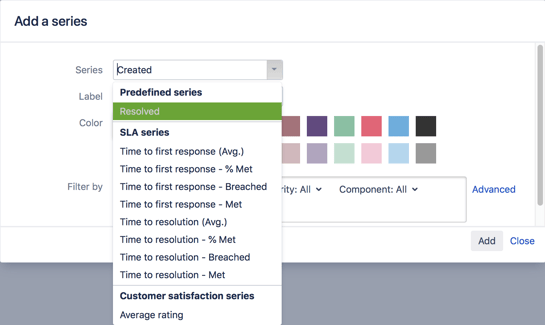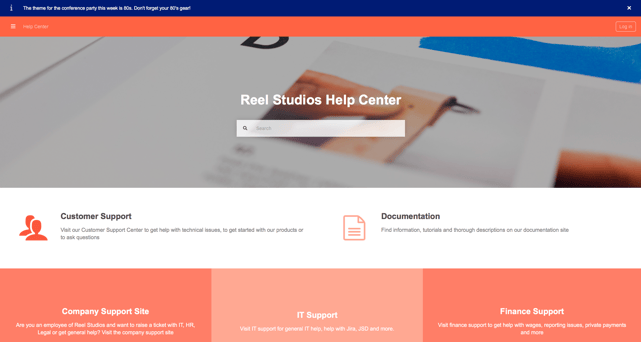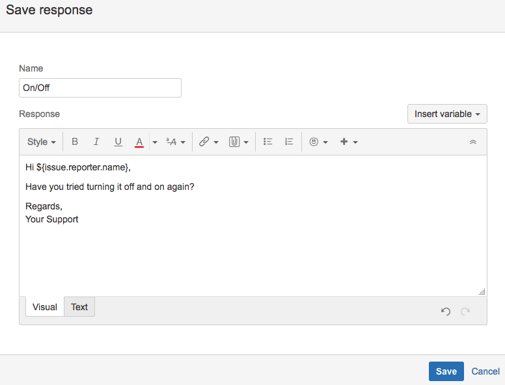Let Jira Service Desk take care of it

Service desk. This term might bring to mind the IT Crowd, a British comedy where IT support’s first response to any contact is “have you tried turning it off and on again?”. Maybe it’s the place you reach out to when you’ve forgotten your password or need to ask for help when the printer is jammed.
You might think a service desk is just a support function, something IT-related, nothing to do with me.
But a service desk can be more than that. Digitalization has come to revolutionize basically every aspect of how businesses run. As a result, organizations are moving from product businesses to services. To get the best customer experience, there has to be an organized way of reacting to incoming requests so that they are answered in good time, getting better by the day!
So, any business providing a service should have a service desk. And Jira Service Desk is a great option for that.
Jira Service Desk is easy to use, customizable, and agile
At its simplest, Jira Service Desk can be used as a ticketing system: connect an inbox to it and all emails generate either a new ticket or a comment to an existing ticket. Only the summary (or title) field is mandatory!
You can also use Jira Service Desk as a full-blown IT Service Management solution since it provides ITIL-certified incident, problem, change and service request management templates that you can use out-of-the-box or customize. Since Jira Service Desk is part of the Atlassian ecosystem, add-ons like Refined (customer portal theming and UI improvements) or Insight (configuration management database built on top of Jira) can be used to extend Jira Service Desk functionalities even further.
Self-service articles fuel teamwork and guarantee quality
Teamwork is fundamental. Jira Service Desk acts as an enabler for teamwork because it facilitates constant knowledge sharing.
When knowledge is shared in a Confluence Knowledge Base space, it can be shown to a customer or used internally to showcase how-to articles related to the support request. Setting one up is easy – just link a Confluence space to your service desk.
Creating a new Knowledge Base (KB) article can happen directly from a Jira issue. Just click on ‘create an article’ and you will be redirected to making a new page on Confluence. Jira Service Desk automatically searches the Knowledge Base space for articles with keywords found in the issue summary (all other fields are ignored so make sure the incoming requests have some kind of structure to them).
Your team can also share KB articles with customers by searching the KB.

Set up Knowledge Base so that articles can be viewed without reserving a Confluence license for a customer. The customer will, however, need to have an account on Confluence – using a Jira user directory in Confluence resolves this problem. If the Service Desk is only for internal use and all users come from the Active Directory, that can be added to Confluence to achieve the same functionality.
All that knowledge: reports and tracking
Jira Service Desk provides basic reports but making custom ones is pretty easy too. How long, on average, does it take to resolve an issue? Are there recurring issues? Maybe we should create a new knowledge base article to tackle those. Are there more tickets created than resolved? How satisfied are customers?

If customer satisfaction tracking is enabled, Jira Service Desk will send an email to whoever made the request when their request is resolved, asking for feedback on that request. They can grade the request from 1-5 stars and give (optional) written feedback.
Service Desk agents can view the feedback directly on a related support request and customer satisfaction can also be tracked at a project level.
Using Refined to give your portal a professional touch
Extending your Jira Service Desk is super simple with Atlassian’s marketplace which hosts thousands of free and paid plugins. One of the common requirements for Jira Service Desk is a clean, branded look and feel which is easy to use.
Refined does just that. The main functionality is based on content modules which can be used to display customer request types, to link content to the Service Desk (for example to external forms) or to display open requests, all in one view.
Refined also improves Jira Service Desk search functionality to include request types and knowledge base articles. This makes it easier for your customers to find the correct resources. Organizing content has clear benefits: for one, it increases self-service article readership.

Refined has an awesome demo which shows its capabilities and works as a good model for building your own portal. See how Refined can help you categorize Confluence too! >
Who knows: maybe one day Refined will also be available for Jira, meaning you will be able to have your issues, service requests, and knowledge all on one page!
Eficode ROOT team can help you with Jira Service Desk
Atlassian Jira lets you tie your software development efforts together by connecting it to your actual development in SCM (be it Git or Subversion), to your Documentation (Confluence) and even to your CI pipeline – and then transition the same software project to support and maintenance by providing end user support via Jira Service Desk. The seamless integrations allow your developers to focus on what matters – squashing those pesky bugs and providing the best possible experience for your end-users.
Jira is part of the Eficode ROOT pipeline where it does all that and much more! Want to learn more or are you interested in how all this fits in your scenario? Contact us and we’ll gladly talk you through your options here!
Pssst. You can even save your typical answers as canned responses – something that the guys in the IT Crowd might have appreciated ;) Just create a template with variables – less typing means more resolved requests!


Published:
Updated:

